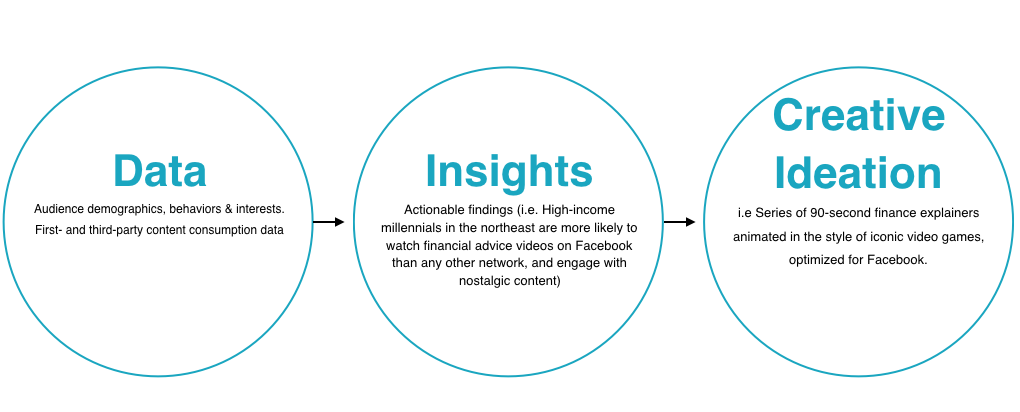
Video aggregators are a way to organize large amounts of video content in one place. They allow you to use search tools, recommend videos and billing. You can use them even to find videos related a certain topic. Although choosing the best one is up to you, there are some principles that you can follow when choosing a video aggregator. Below is a comparison between some of the most well-known video aggregators.
Organizing a vast amount of video content
As SVOD subscriptions rise, so does the need for an aggregator. Consumers will need to navigate the huge amount of content that is available with over 1.74 billion video subscriptions globally. There are many types, including disruptors like Amazon and established players like Pay TV. However, everyone agrees that aggregation is vital to the future development of video because it offers consumers and providers a single point-of-billing.
A number of factors impact the need for an aggregater. First, consumers expect personalized video content and convenience. They also want to find content that is tailored to their needs, so streaming services are stepping up their efforts to provide this platform. These consumers will be assisted by AVOD-aggregators, who can assemble and package clips relevant to their interests.
Secondly, aggregators offer a variety of benefits for producers. Aggregators can negotiate better deals for platforms and help smaller films find theatrical release. Aggregators can help smaller films discover digital distribution opportunities in markets that are not traditional. It is important not to confuse film aggregators and video hosting websites. They are a middleman between creators and distributors, providing localisation, marketing, and technical services.
While streaming services are increasing in popularity, consumers still don't like the user experience. It will be more difficult for consumers to find their favorite content and watch it as more big companies enter the space. Video aggregators will be an important tool in facilitating flexibility and personalization. Accenture recently found that people prefer to view their favorite content via one platform over multiple.
Search
As the amount of SVOD subscriptions increases, the need for a video aggregator to make it easier for consumers to find and consume content grows. A survey of subscribers to pay TV found that 62% got frustrated trying to find the content they wanted. Operators have introduced search and recommendation tools to alleviate subscribers' frustrations over the past five years. There are many options in this area.

The biggest problem with streaming video is that there are so many content providers. Each one has their own app, making it difficult to find specific content. Intellectsoft designed an app that aggregates content from various providers and indicates which platforms they are available. These video aggregators are now widely available and are an excellent resource for finding the content you're looking for.
This model is simple and effective, but it can be difficult to commercially achieve. Many video aggregators struggle to obtain metadata rights and don't own the content they host. Instead, some of them resort to scraping methods. Video aggregators often refuse to include revenue sharing or banner advertising in their revenue models. They may not be able to gain the attention they deserve.
News aggregators can be used to locate the most recent news stories and news. These tools may also allow you to find videos that relate to a certain topic. Video aggregators with the best results automatically curate stories for users. Google News is an excellent example. It curates stories automatically for its users. Google News collects news from multiple sources and is great for gathering the latest news.
Recommendations
Video aggregators are a result of the growing popularity of SVOD. These aggregators are becoming an integral part of TV packages. Many consumers are frustrated with the difficulty in finding and accessing content. A recent survey found that over half of subscribers to pay TV find it difficult to find content. This number has declined in the past five years. While some aggregators focus solely on the role of super-aggregators, others have a core business. In each case, they will all play a critical role in specific segments of the market.
With more OTT services on the market, the problem becomes even more complex. Each service requires subscribers to navigate multiple services. Additionally, each service has its own payment system and credentials. Video aggregators have to struggle to obtain metadata rights for their content. This is because these aggregators typically have limited revenue models that do not allow for revenue sharing or banner ads.
Video aggregators offer several benefits. Many are simple to use because most of the process of aggregation is automated. These tools can also be used to search for streaming services across all platforms, which helps reduce friction when dealing with multiple sites. Consumers will find them more cost-effective. These are the top video aggregators.
Indie films can only be released by film aggregators. They can help filmmakers find their films on major VOD platforms and iTunes by placing them on these platforms. Although some actors are not as trustworthy video aggregators as they used to be, there are still benefits for filmmakers. One, they can help them improve their skills and target younger audiences.
Billing

The global SVOD market is expected to grow, and so will the number SVOD subscribers. With almost 1.74 million subscribers worldwide, consumers will need help finding what they are looking for. Billing video aggregators have many roles. Some are solely aggregators, while others serve an established industry such as Pay TV operators. However, they all play an important role in certain segments. Here are some of the most viewed.
This is the most simple model, but it's also the most difficult to commercially implement. Many video aggregators don’t own their content and have difficulty obtaining metadata rights from content suppliers. Some resort to scraping. The services may not be interested either in advertising banners or revenue-sharing. This is another problem with aggregation income models. These revenue models have several advantages.
Billing video aggregators are also able to assist consumers with multiple subscriptions. However, subscribers can have easier access to more video content. According to recent research, 62% of subscribers to pay TV often have difficulty finding what they are looking for. Aggregation services are meant to address this problem. They simplify managing multiple subscriptions, increase account management, and suggest content.
There are many variations in aggregate fees. They average $1K per feature film. Other fees are lower. Some aggregators may offer a revenue share model which lowers upfront fees. Other aggregators might offer discounts on Compressor and related assets. Others may offer Compressor users discounts and create assets for them. These costs may not be worth the advantages of the platform. So, how do you determine if a particular platform will work best for you?
FAQ
How often should I update the website?
There are several options to update your site. One way is to use a CMS or Content Management System. You can edit any content on your website without touching any code.
A plugin that updates your website automatically is another option. These plugins can either be purchased from WordPress stores or installed by you.
You can also download free plugins such as Yoast and WPtouch. The best thing to do is to test different methods and see which works best for you.
What Does SEO Mean For Small Businesses?
Today, small businesses face the challenge of competing against large corporations that spend millions advertising. Search Engine Optimization (SEO), enables smaller businesses to reap the benefits of this same marketing power without spending a fortune.
What are some common mistakes people make when using SEO?
SEO is one of the biggest mistakes people make. SEO cannot be done quickly. Your website must be optimized correctly to succeed. A common mistake is to try to trick search engines with black hat methods. Black-hat SEO techniques can cause you to fall in search engine rankings rather than improve them.
Why do I need an SEO strategy
SEO strategies will help you to maximize your potential for growth. When ranking higher in search results, there's no point in having great content if nobody ever finds it!
SEO strategies are a great way to build relationships with people and experts in your industry. You can benefit from their expertise and connections to learn new tricks, and be able to stay ahead of your competitors.
How Can I Get Started With SEO?
SEO is possible in many ways. The first step in SEO is to identify keywords you'd like rank for. This process is called "keyword research." Next, optimize each page of your website for these keywords.
Optimizing a website involves adding keywords, descriptions, meta tags, unique page URLs, and linking with other websites. After optimization has been completed, you'll need to submit your website to search engines like Google, Yahoo!, and Bing.
To know if your progress is being made, you will need to keep track.
What is On-Page SEO?
On-page SEO is the process of improving your website's ranking in search engines. On-page search engine optimization covers things like site architecture, page titles (meta tags), image alt text, and page titles. Off-page search refers only to activities that do not directly impact your website's ranking. These include backlinks, social media shares, press releases, and more.
Statistics
- A 62.60% organic traffic boost to that page: (backlinko.com)
- : You might have read about the time that I used The Content Relaunch to boost my organic traffic by 260.7%: (backlinko.com)
- And 90%+ of these backlinks cite a specific stat from my post: (backlinko.com)
- 93%of online experiences today begin on search engines. (marketinginsidergroup.com)
- Deleting those 10k pages is one of the main reasons that he improved his site's organic traffic by nearly 90%: (backlinko.com)
External Links
How To
How can I determine if my SEO is doing well?
There are several ways you can tell whether or not you're doing great SEO:
-
Your bounce rate should be less than 30% - users leave your page without clicking on anything else. A high bounce rate indicates that your audience doesn't trust your brand or isn't interested in what you're selling.
-
Visitors will visit different pages on your site. This is a sign that they are engaging with your site.
-
Your conversion rates are improving. Your audience is aware of your product and wants it to be bought.
-
Your site's average time is increasing. This means that people spend more time looking at your content.
-
This is a good sign that you are doing great SEO.
-
This means that you are getting more social media shares - it shows that others are sharing your content and reaching new audiences beyond your own followers.
-
You get more comments on forums, which shows that people are responding positively to your work.
-
Increased engagement means more likes and tweets around your site, as well as shares, shares, likes and likes on posts.
-
Your rank in SERPs keeps increasing, a sign your hard work is paying off.
-
Your website is receiving more leads. This means people are finding you organically and are contacting your website.
-
You are seeing an increase in sales - this means that people who visited your site looking for your products or services are purchasing them.
-
You get more views and comments on your blog posts, which means that people find your content useful and interesting.
-
More subscribers mean more customers to your email list. This shows that people are able to trust you enough to sign up for updates about your company.
-
Sales are rising, which means that people love you and your products to the point that they will pay for them.
-
You've got more followers on social networks, showing that your fans share your content and engage with your brand.
-
You are getting more PR mentions. This shows that journalists are talking online about your brand. This boosts your image and raises awareness for your company.
-
You're being recommended more often - this shows that other companies also recommend your brand.
-
People continue to return to your website. This is a sign that your customers are satisfied with your work, and will return again and again when they need your assistance.
-
Your competitors are losing ground. This means that they haven't invested as much in SEO campaigns as you. It makes them look bad.
-
Your brand's image changes - this indicates that your brand has gained popularity among a new set of customers.